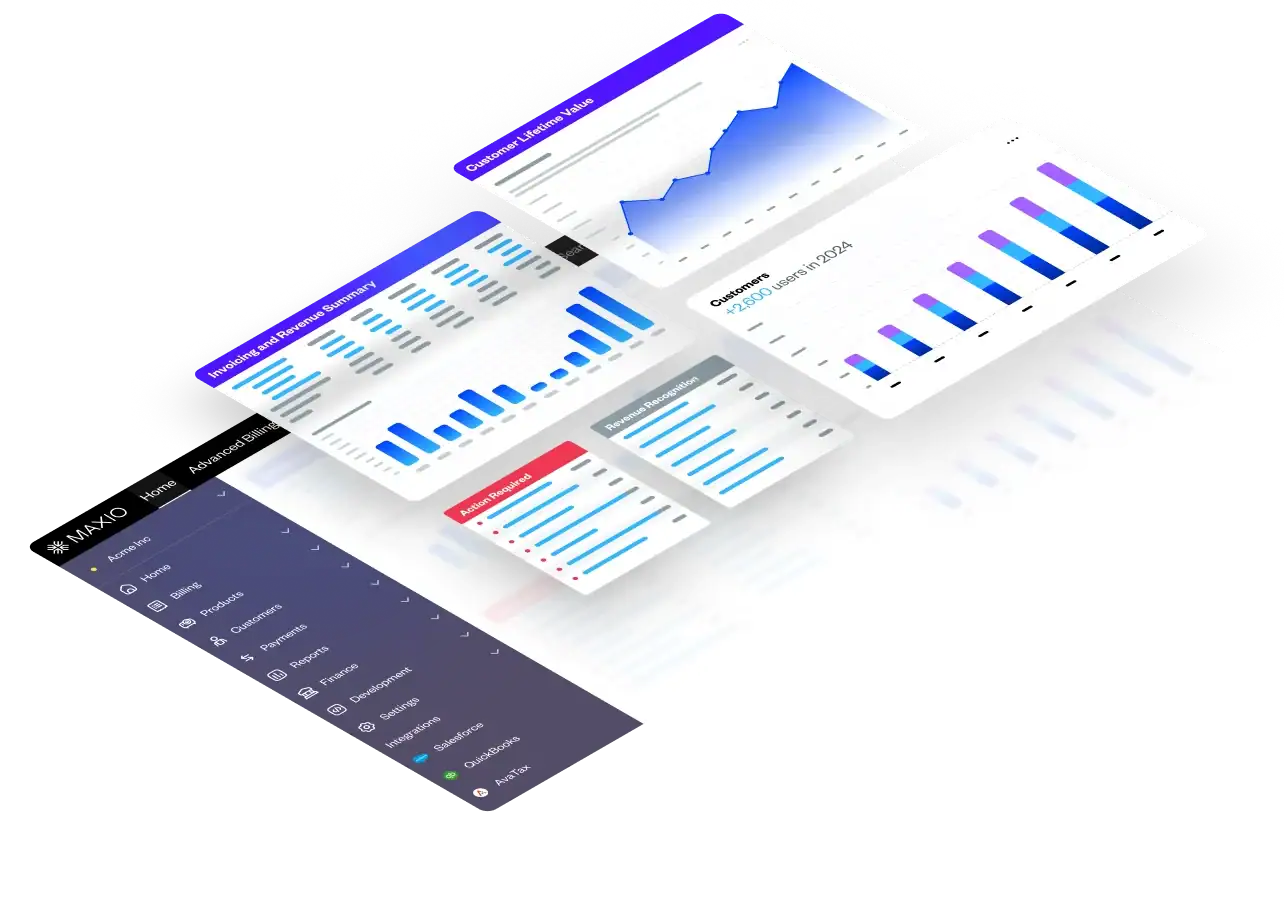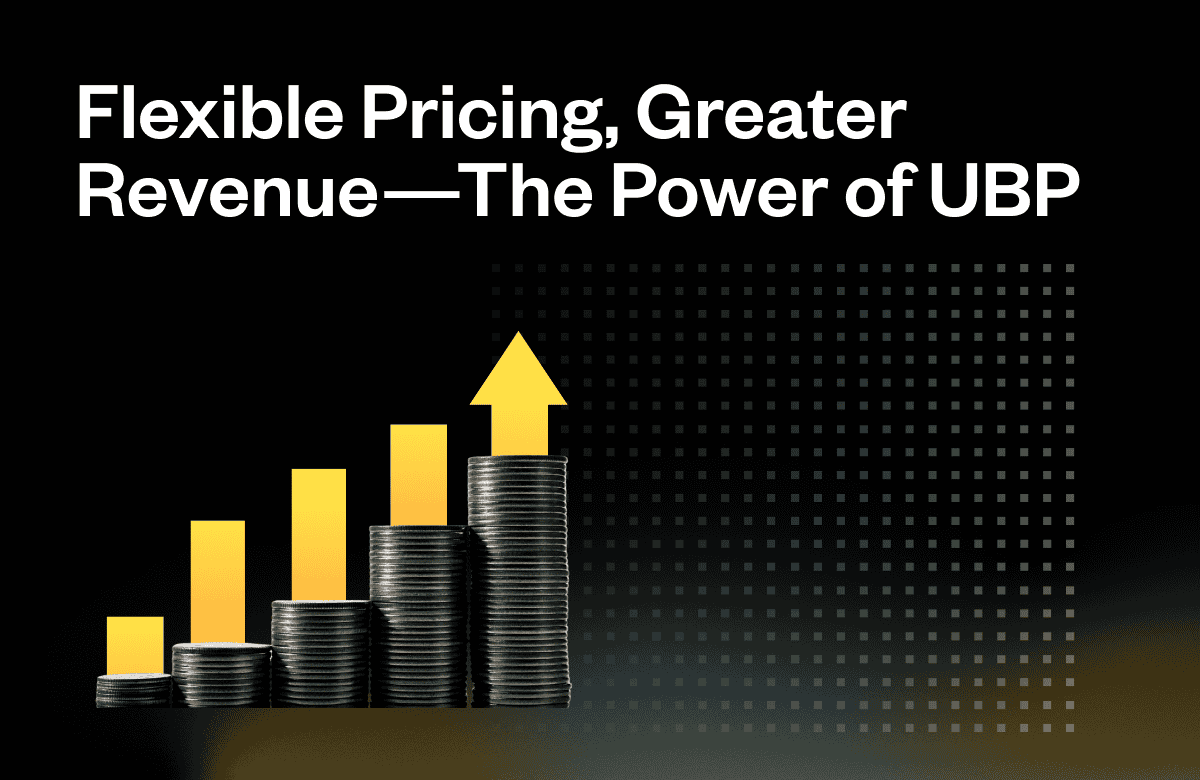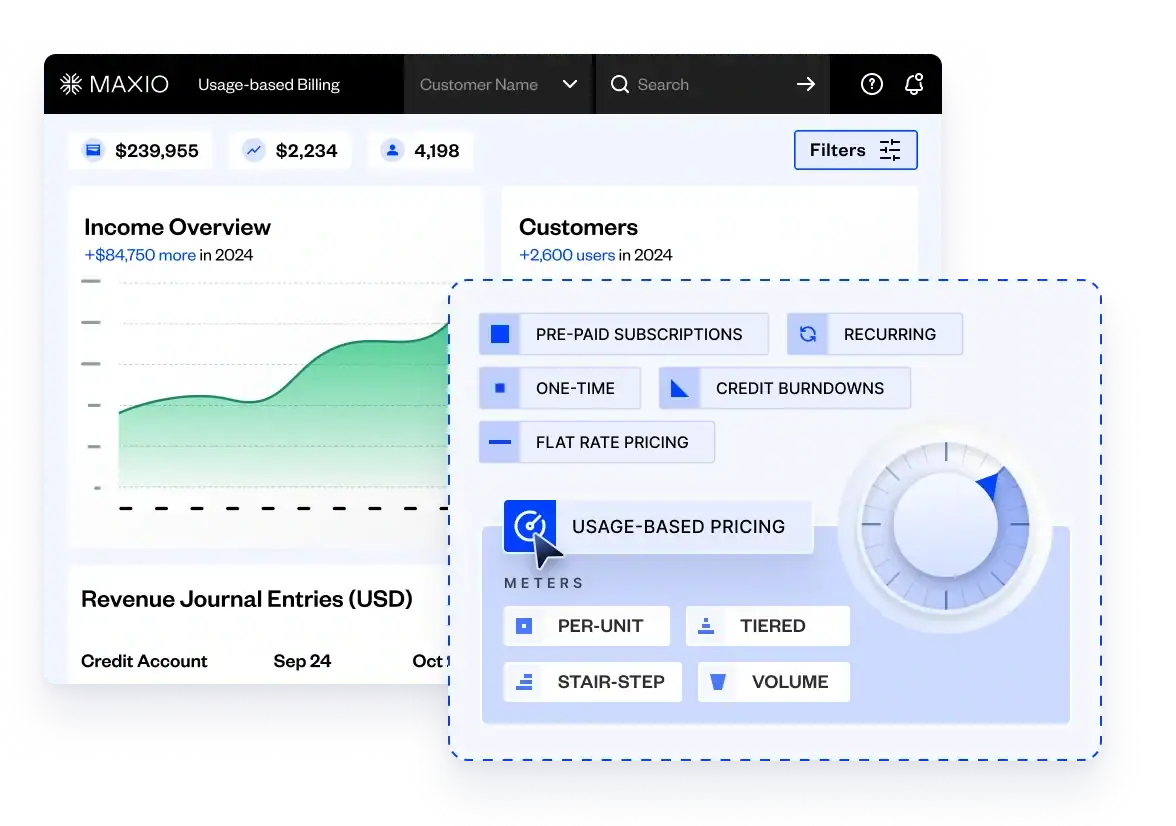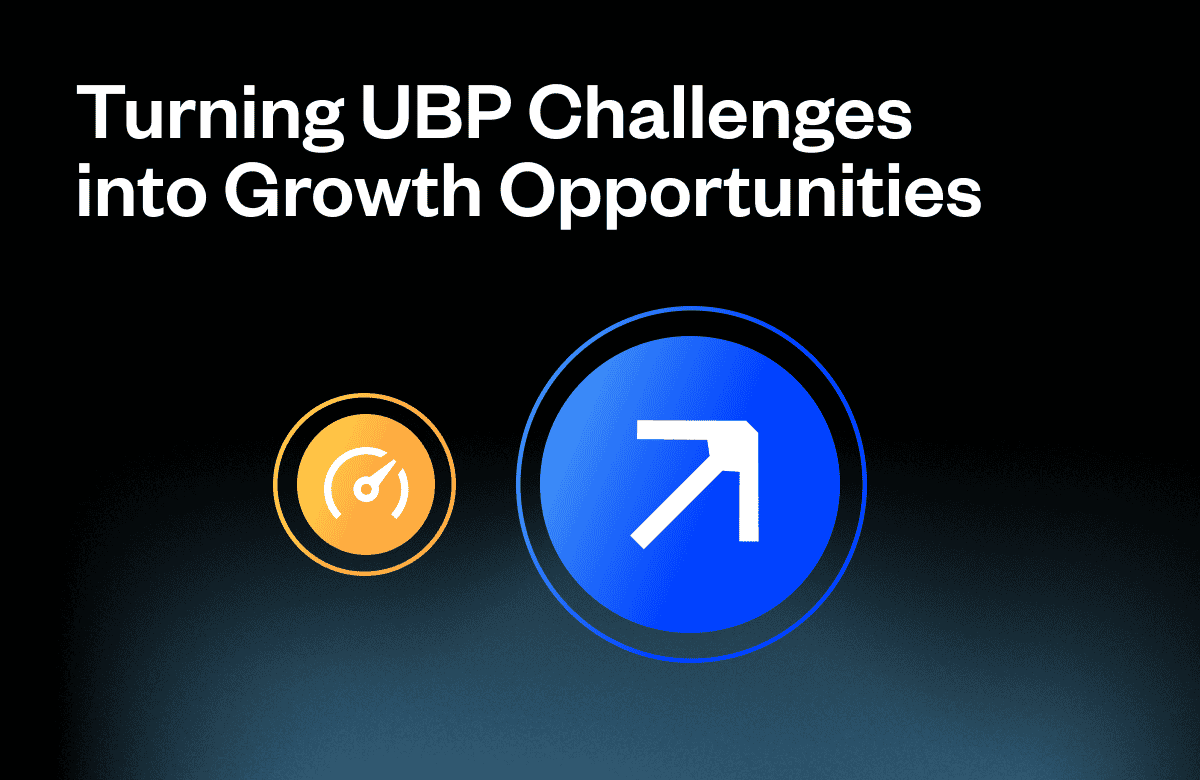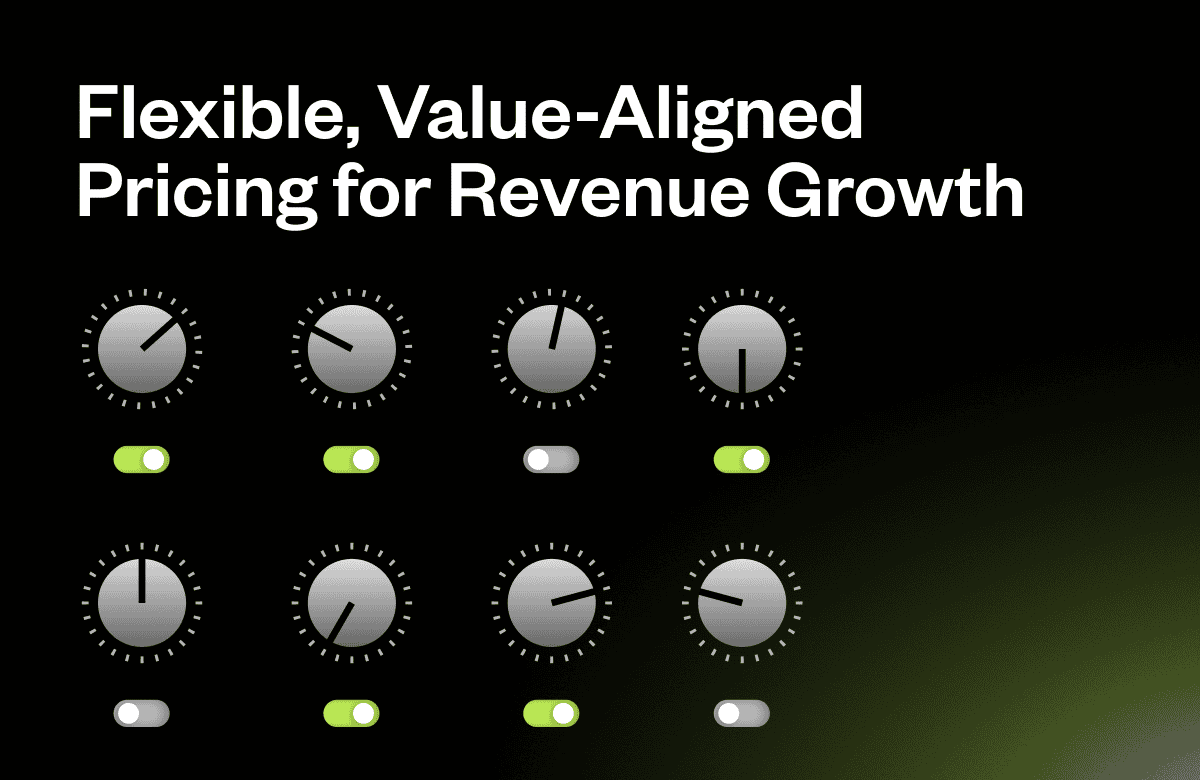Why Usage-Based Pricing is a Revenue Game-Changer
Pricing isn’t just about covering costs—it’s a strategic tool to encourage customer expansion while making them feel in control. Usage-based pricing (UBP) removes barriers to adoption and encourages natural expansion. By allowing customers to pay for what they use, rather than committing to rigid subscription plans, UBP creates a seamless path to higher spending and predictable revenue growth.
How UBP Drives Revenue Expansion
Encourages Organic Upsells
Unlike fixed subscription tiers, UBP fosters natural upsell opportunities. Customers who see value in a product continue increasing their usage, leading to organic revenue growth. This eliminates the need for sales-heavy upsell motions and allows businesses to scale more efficiently.
When costs align directly with value received, customers feel confident in expanding their investment. Instead of being forced into pre-set pricing tiers that may not fit their needs, they can scale spending based on actual demand—resulting in higher spend without resistance.
Reduces Purchase Friction
Many SaaS buyers hesitate to commit to high-cost subscriptions without first experiencing a product’s full value. UBP removes this friction by enabling customers to start small and increase usage at their own pace. This flexibility results in a smoother sales process and higher adoption rates.
Companies leveraging UBP often find that prospects who might hesitate to sign a long-term contract feel more confident when they can pay based on their actual needs. This lowers the initial financial commitment and removes psychological resistance to purchase.
Increases Customer Lifetime Value (LTV)
Retention and expansion drive LTV, and UBP supports both. Customers who feel in control of their spending stay engaged longer and continue increasing their usage over time.
In a traditional subscription model, customers often reassess whether they’re getting enough value for their investment, leading to potential cancellations. With UBP, as long as the service continues delivering value, customers remain engaged and grow their investment naturally. This makes UBP a powerful tool for maximizing customer lifetime value.
Creates Predictable Revenue Streams
While traditional subscription models provide stability, they lack flexibility. UBP balances adaptability with financial predictability by enabling companies to analyze customer usage trends and accurately forecast revenue.
With the right analytics in place, SaaS companies can track usage patterns and project future revenue with confidence. This ensures revenue growth remains predictable while allowing customers to scale their usage in a way that aligns with their needs.
Best Practices for Optimizing UBP Revenue Strategy
Provide Transparent Billing & Usage Insights
Billing transparency is key to customer trust in a UBP model. To ensure clarity:
- Offer itemized invoices that detail usage-based charges.
- Provide real-time dashboards so customers can track their spending.
- Send proactive alerts to prevent billing surprises and improve customer satisfaction.
Automate Billing & Revenue Management
Manually managing UBP is inefficient and prone to errors. Instead, SaaS companies should:
- Use automated billing systems that support variable pricing.
- Leverage predictive analytics to forecast revenue trends.
- Streamline invoicing and reporting to maintain accuracy and transparency.
Real-World Success: UBP in Action
Consider a SaaS company offering cloud storage solutions. Initially, it relied on fixed-tier pricing, but customers with fluctuating storage needs either overpaid or left for more flexible competitors. By introducing a pay-as-you-go model, customers could scale their usage up or down based on real-time needs.
The results? Higher retention, increased spending by power users, and a significant drop in churn. Customers who started with minimal usage eventually expanded their spend over time, proving the revenue-boosting power of UBP.
Addressing Common UBP Challenges
Managing Revenue Predictability
UBP can introduce revenue fluctuations, but hybrid models—combining base subscriptions with usage-based fees—help stabilize cash flow while preserving flexibility.
Educating Customers on UBP Pricing
Customers unfamiliar with UBP may struggle to understand their charges. Businesses should prioritize:
- Clear pricing communication from the outset.
- Transparent, easy-to-read invoices.
- Proactive notifications to keep customers informed about usage and costs.
Continuous Pricing Optimization
SaaS companies must continuously refine their pricing models based on usage data to remain competitive. Regular adjustments ensure they capture optimal revenue while delivering value to customers.
Unlock the Full Potential of UBP
Usage-based pricing isn’t just about fairness—it’s a strategic revenue accelerator. Companies implementing UBP effectively can drive higher spending, improve retention, and create more predictable revenue streams.
Want to refine your UBP strategy and maximize revenue growth? Download Maxio’s Adopting Usage-Based Pricing in SaaS: A Practical Guide, for expert insights and actionable best practices.
